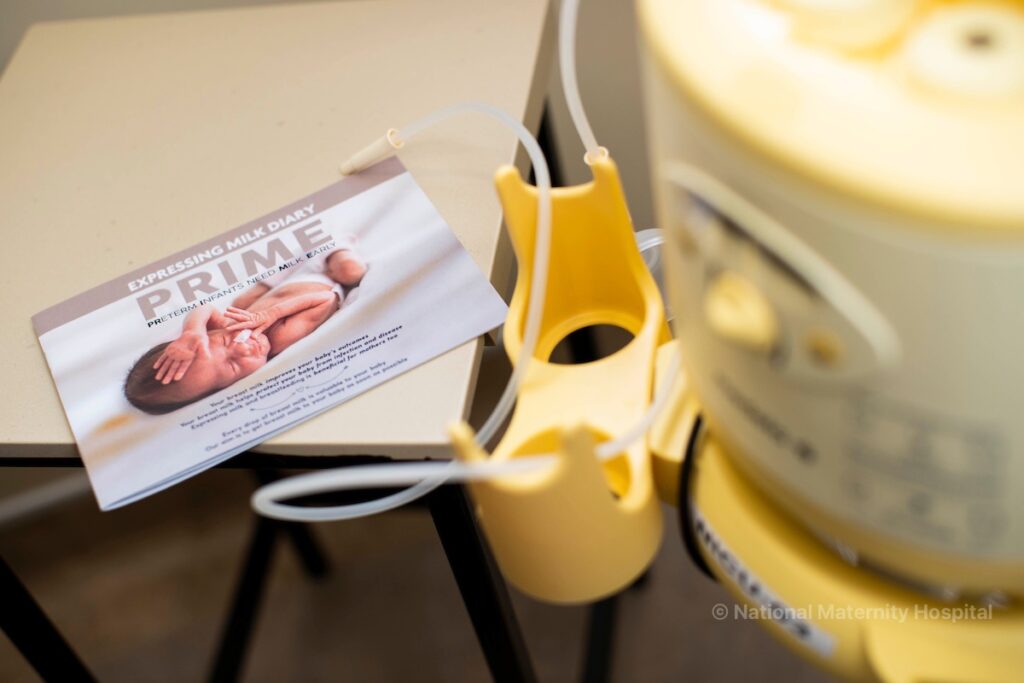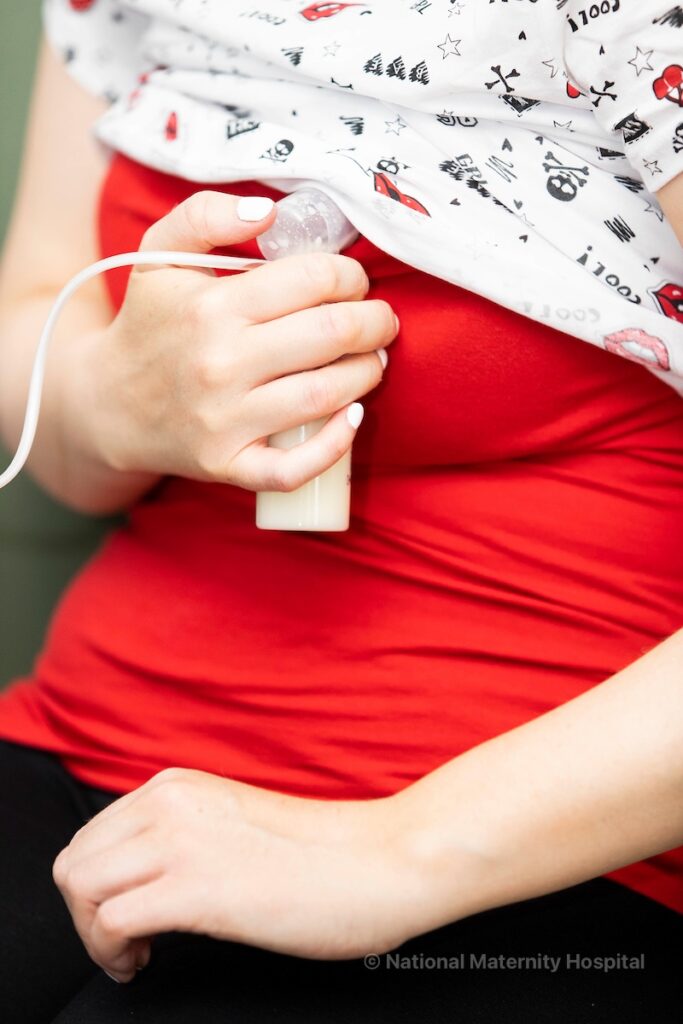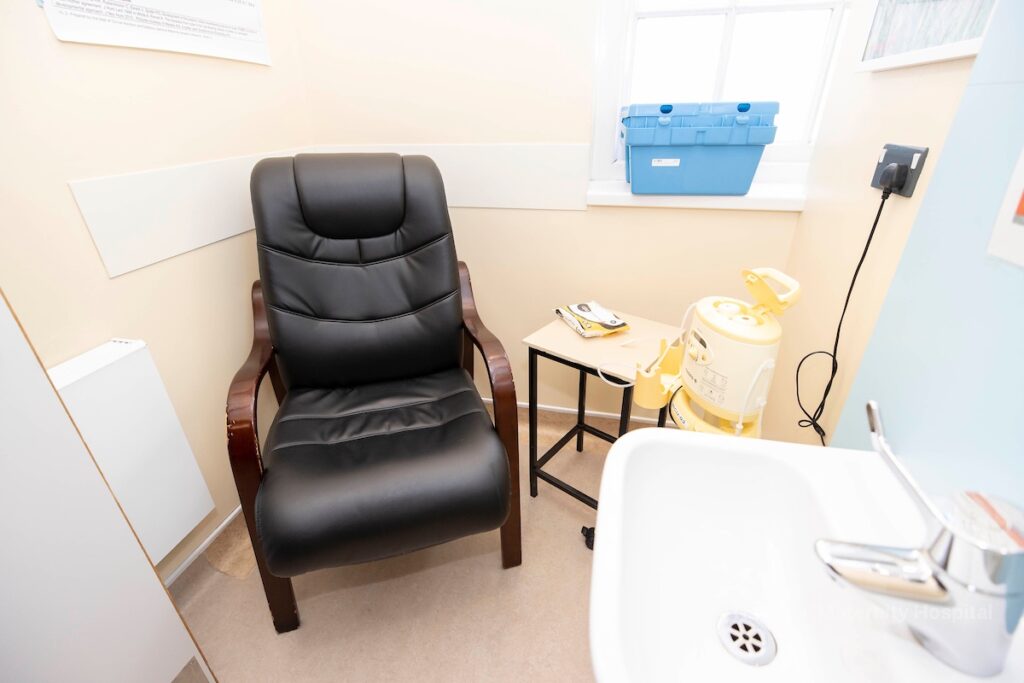In the NICU - Feeding
Expressing milk
If your baby is very preterm or unwell, they may not be able to breastfeed at the start. If so, you can express (pump) your milk to provide it to your baby in another way, e.g. through a feeding tube.
The booklet ‘Breastfeeding and expressing for your premature or sick infant’ is an excellent resource and provides a lot of information to help you get started. We encourage you to refer to this as a guide throughout https://www.healthpromotion.ie/hp-files/docs/HCU00972.pdf.
Remember
Ask for guidance and support
It might seem daunting to express milk with all that is going on, so do not forget to ask for support and guidance. People are available to help – just ask!
Let us take you through days 1, 2 and 3+ of expressing milk and how to optimise your milk supply.
In this part, we talk to you about how to express milk and give you tips to make it easier for you. Expressing milk means using your hands or a breast pump to take milk from your breast. The first few days you will not produce much milk, but after that, you can expect your supply to increase each day over the first couple of weeks until you achieve a full supply.
 Your milk is produced in response to demand, the more you express, the more you produce. We encourage you to start as soon as you can and to express regularly throughout the day and night – by doing this you will have more milk.
Your milk is produced in response to demand, the more you express, the more you produce. We encourage you to start as soon as you can and to express regularly throughout the day and night – by doing this you will have more milk.
It may take a little time to learn how to express, but staff are here to help you and remember, practice makes perfect.
Hand express colostrum
Colostrum is the first milk that you produce during the first couple of days after your baby is born. It is produced in small amounts, but each drop is precious.
Colostrum is often referred to as ‘liquid gold’ due to its gold colour and high value because of the higher concentration of goodness it provides. It is rich in ingredients that help your baby’s gut and help them to fight infections. It is the preferred first feed for your baby and the aim is that they can receive it as soon as possible. Hand expression is the most effective way to get colostrum.
Ask your midwife to show you how.
Start hand expressing as soon as possible after your baby is born – ideally within the first hour. This is important for your milk supply; your baby is also waiting for your milk.
Collect your colostrum in sterile feeding syringes or small containers. Ask for a supply from your midwife or your baby’s nurse.
Drops of colostrum may be given directly into your baby’s mouth, even if they are not able for oral feeds. This acts as a natural cleanser for your baby’s mouth. Babies like the taste too.
Day 3 & onwards – use a pump to express milk
After the first couple of days, colostrum will start to change to white milk. Volumes should start to increase from this point too.
- Switch from hand expressing only to use a high quality double electric pump, while continuing to massage your breasts with your hands while expressing.
- A hospital grade pump is ideal, as it is best to help increase your milk supply.
Double pumping means expressing from both breasts at the same time.
- Hospitals have breast pumps for you to use at the hospital; but you need to organise a suitable pump to use at home. Some suppliers offer a discount on the cost of renting or purchasing a pump for mothers of babies who are preterm or unwell if you ask. Check with staff if other assistance may be available.
Ensure that the suction setting on the pump is appropriate and is effective.
You also need an expressing kit to match the pump you use. Kits can be either single-use or re-usable. Ensure that the funnel (shield/flange) on the kit is comfortable and the right size for you. Funnels are available in a range of sizes. Ask for a kit from your midwife or your baby’s nurse. You will also need to organise a supply for use at home.
- Collect your milk in sterile containers. Make sure you have containers to use at home too.
Remember
Clean Hands
Ensure your hands are clean before expressing or handling your milk
Expressing at night
The milk-making hormone, prolactin, is higher at night, so expressing at this time is important to help boost your supply.
You need to express frequently and effectively to optimise your supply.
Tips to help optimise your milk supply when expressing
- Hold your baby skin-to-skin or at your chest (kangaroo care) or offer other skin-to-skin contact before expressing – if possible.
- Express close to your baby or think about them as you express. It may help to have something that reminds you of them, e.g. a photo, video or a piece of their clothing or a blanket with their scent.
- Apply something warm (e.g. a warm face cloth) to your breast before you express to help your milk to flow. When using an expressing kit, make sure that the funnel is not too cold before use.
- Use your hands to massage your breasts as you express. A ‘hands-free’ pumping bra or an adapted bra can be helpful so that your hands are free to massage.
- Continue to express until your milk flow slows.
- Express 8-10 times each day until your supply is established. This means expressing every 2-3 hours or so, including at least once during the night between midnight and 6am. It can take 2 weeks or more to establish your supply.
- Avoid long gaps between expressions. This includes leaving a gap of no more than 5 hours overnight. You may need to express more frequently at other times to ensure 8-10 sessions over each 24 hours.
- Once your supply is established, it may be possible to reduce to 6-8 expressing sessions (every 3-4 hours or so), but always continue to express at least once during the night.
- If your supply drops, you will need to increase the number of expressing sessions again. We also recommend using a high quality (ideally hospital grade) pump when you need to increase your supply.
- If your supply is low or slow to increase, try power pumping to help boost it.
Remember
All equipment that comes in contact with your milk including the expressing kits (funnels and valves) and containers must be sterile before use.
When using re-usable equipment, wash in hot soapy water and sterilise before each use


Expressing room is available if it does not suit to express at your baby's bedside
Power pumping
Power pumping involves regular cycles of expressing and rest while massaging your breasts.
For example, express for about 20 minutes, then ‘rest’ for about 10 minutes, then express again for 10 minutes and continue to swap between expressing and resting every 10 minutes or so for about an hour. During the ‘rest’, pause the pump and continue to massage and apply warmth to your breasts.
Try adding 1-3 x 1 hour power pumping sessions per day for 2-3 days to help boost a low supply. You can discontinue power pumping when your supply has increased.
Remember
Expressing should not be painful
If you experience pain, let your midwife or nurse know.
Breast Milk
We suggest you keep a diary to record the times you express and the amount of milk you produce each time. This can be useful to identify if there is an issue.
When expressing milk, a ‘full’ milk supply is considered to be about 700-900 mL or more daily. This is close to one litre of milk or the equivalent of filling 2 x 50 mL containers (approximately half a glass) 8-10 times daily. Even if your baby does not need this volume now, optimising your supply now will help to ensure you have enough milk when they need it. You can store any extra milk you produce for later.
If your milk supply is not increasing daily over the first couple of weeks, or you do not produce at least 700 mL daily by 2 weeks, or if you have a concern about your supply at any stage, ask for guidance.
Different factors affect your milk supply and for some mothers, despite your best efforts, it is difficult to produce this amount, but it is still of value to optimise the volume you can produce.
Remember, every drop is valuable!
The volume of milk that you produce can vary from one breast to the other, from one feed or expressing session to the next, and between you and other mothers.
The composition of your milk also changes during a feed or expression session and over time.
Effective expressing including massaging your breasts while expressing, helps to optimise the fat content of your milk. Milk with a higher fat content helps your baby to gain weight.
The composition can also change when milk is stored, that is why we say ‘fresh is best’.
If you express milk away from your baby, bring it to them as soon as possible. This is especially important in the early days when your baby is waiting for each precious drop. If you cannot bring it yourself, ask someone else to. This can be an important job for partners.
A special transport service is also available to bring your milk to your baby in another hospital if required.
When you bring milk from home, make sure it is kept cold. Use an insulated cooler bag or box. Frozen gel or ice packs can help to keep it cold.
If your baby transfers to another hospital or when they are discharged home, make sure any milk you have stored in the hospital is brought with them.
Fresh milk is best for your baby. If your baby cannot use your milk when it is freshly expressed, store it safely for later use.
Before storing your milk, label each container to identify it with:
- Your baby’s name
- Your baby’s hospital number
- Your baby’s date of birth
- The date and time the milk was expressed so that you know which to use first and when it expires
Ask staff for a supply of labels
The following storage times apply for expressed milk that will be used for babies in hospital:
- Store in a fridge for up to 48 hours if it is to be used within this time.
- Store in a deep freezer for up to 3 months from the date you freeze it. Only freeze milk if it cannot to be used within 48 hours.
Different storage times apply for milk that will be used for babies at home. Details are available at https://www2.hse.ie/wellbeing/child-health/expressing-breast-milk/storing-expressed-breast-milk.html].
Use expressed milk in the following order:
1. Freshly expressed milk
2. Refrigerated milk, not previously frozen
3. Defrosted previously frozen milk; use oldest date first
Stored breast milk can appear to ‘separate’ into different layers. To help overcome this, gently mix your milk before giving it to your baby.
If you produce more breast milk than your baby needs, you can donate it to the Human Milk Bank.
The Human Milk Bank pasteurises the milk so that it can be given to other babies.
Remember, your milk can be stored for later use by your baby, so we only suggest donating it if your baby no longer requires expressed milk.
Details on becoming a milk donor are available from the Milk Bank https://westerntrust.hscni.net/service/human-milk-bank/
PReterm Infants need Milk Early (PRIME)
PRIME is a multidisciplinary initiative first introduced at the National Maternity Hospital, Dublin to help get breast milk from mothers to their babies in the neonatal unit without delay. It highlights 7 steps for the first 7 days …
Further guidance on expressing milk, including a video showing how to hand express, is available at www.mychild.ie [LINK to sections on expressing milk https://www2.hse.ie/wellbeing/child-health/expressing-breast-milk/how-to-express-breast-milk.html / https://www2.hse.ie/wellbeing/child-health/expressing-breast-milk-for-premature-or-ill-babies.html
.


